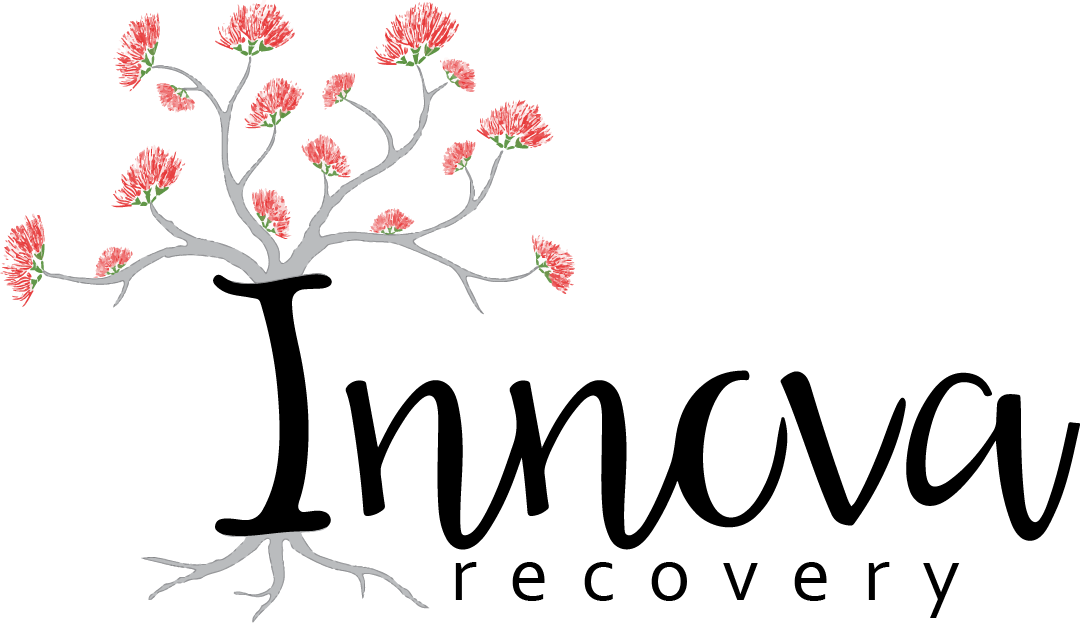With the many unknowns and the anxiety of the world today, it may be hard to move forward in this new normal and coping with the changes. Dr. Kasi Howard, Founder of Innova Recovery Center, is sharing tips on how to cope with anxiety and depression during these difficult times. She also has resources for telehealth therapy from home.
Category: News
Coping in Quarantine
As things are increasingly uncertain, anxiety can go up exponentially. Here are a few tips on ways to cope with isolation, uncertainty and finding a new norm.
Coping in Quarantine
1. Connect with others -Make it a goal to call/FaceTime/Skype at least one person every day
2. Focus on one day at a time.
-No one knows what this will look like so donʼt try to guess or forecast months ahead.
3. Give yourself grace.
-You child will be fine if they miss a few days of math this month. Your partner will be fine if they eat ravioli for a week. You donʼt have do everything perfectly. You have just taken on a lot of new roles which require an adjustment period.
4. Set a goal to do that thing you have always wanted to do but didnʼt have time.
-Focusing on what you are missing can be exhausting. Shift your focus to what you now have, which is a little more time to do that things you wanted to do. Take guitar lessons. Write a book. Draw. Learn to knit. Find one thing to give you a sense of mastery and commit to practicing it a little each week.
5. Remember that itʼs okay to not be okay.
-Itʼs okay to be scared. It is okay to be uncertain. Thereʼs not a “good” way to do this. Thereʼs no right or wrong. Just be. Just breathe. You will get through this.
6. Ask for what you need.
If you need help making ends meet, ask. If you need socialization, reach out. And if you feel you need professional help, many therapists are offering telehealth counseling now, easily accessible from your home. Your insurance will cover telehealth in the same manner it would an in-office visit. If you need help finding a counselor, call Innova Recovery Center today 210-254-3618 to speak with.
EMDR Introduction
It is a non-talk therapy in which the client does not have to go into detail about the memories of disturbing events which often contribute to nightmares, flashback and being triggered when unexpected events set us off. EMDR is very much a person-centered approach that gives the client control of the treatment process. Compared to other trauma treatments, homework is generally limited to practicing coping skills and no written homework. In comparison studies with other evidenced based treatments, EMDR has better recovery rates and significantly less treatment dropout.
What make EMDR innovative is the utilization of back and forth eye movements or tapping while focusing on the traumatic event. This provides the mechanism to shift the traumatic memories from the areas of the brain that control fear into the working memory. A person who has successfully completed treatment with EMDR will be able to discuss what happened without experiencing the upsetting emotional reactions they had previously.A typical EMDR session has 8 phases. Phase one (History taking) is the evaluation/history taking process to determine symptoms, diagnosis and appropriate for treatment. Phase two(preparation) is teaching coping skills to help them stay grounded between sessions. This process can take anywhere from one session to several depending on the complexity of the trauma. Phases three-eight are the actual EMDR sessions themselves. Phase three(assessment phase), is where the memory for processing is selected. Phase four is the desensitizing phase. The patient identifies image related to the memory, the negative belief about self, related emotions and body sensations and the positive belief they want to have in the now. The provider utilizes 0-10 scaling questions to determine level of disturbance.Phase 5 is the installation phase where the target memory is linked with the positive belief. Phase 6 is the body scan where the patient scans through their body for any tension/tightness. Phase seven is for closure. This is when the session is complete and the patient is no longer experiencing the painful memories or distressing emotions. Phase eight is the next session to re-evaluate where the patient is in regards to the last session.
During memory reprocessing, the patient focuses on the disturbing image while the clinician utilizes eye movements/tapping. As the distressing memory is alleviated, new insights and associations will emerge, thus becoming the focus of attention. The goal is to allow the brain to process the new information in an accelerated way. After the session, there is no homework, no forms to complete and the pt is not asked to describe the memory in detail, unless they so choose. There are a number of studies that support what the eye movements do in an EMDR session as well as over 300 international clinical studies that support its effectiveness.
How this is different from Cognitive Behavioral Therapies? These therapies rely on what in our field is called behavioral activation and extinction. This means that during these sessions the provider and the patient are recording (audio and/or written) the details of a particular traumatic event. The sessions will have the person disclose the traumatic memory in detail two to three times. The patient will have to take these recordings home and listen to them daily until the next session. The person is also to engage in what is called “in vivo exposure.” This means that the person will participate in a previously avoided anxiety provoking activity to allow for habituation. The idea is that when they are triggered by something that reminds them of the event, they will not have the same reaction. There are daily worksheets to complete along with home work. There are numerous studies that support the efficacy of these interventions. The difference between EMDR and cognitive behavioral therapies are time in treatment and homework.
What this means:
-EMDR requires no homework between sessions (people are busy and they appreciate this).
-EMDR is as effective as cognitive behavioral therapies (PE/CPT) with decreased time in treatment
-Cost effective- Fewer treatment sessions means cost savings.
-Once the trauma is resolved. It stays resolved. Reduced dependence on disability. Itʼs like scrambling an egg, one cannot “unbreak” a yolk nor is consuming an uncooked egg considered healthy. Once the egg is scrambled, it becomes something so much better. Just like post traumatic growth.
How Telehealth in Texas Can Help You
Itʼs no secret that while many brick and mortar stores are closing, Amazon stock continues to rise at an astronomical rate. The way in which we do business is changing has quickly changed. Smart phones allow us instantaneous access to almost any product or person the world…except your healthcare providers. But that is quickly changing, too.
The Health Resources and Services Administration (HRSA) of the U.S. Department of Health and Human Services defines telehealth as “the use of electronic information and telecommunications technologies to support and promote long-distance clinical health care, patient and professional health-related education, public health and health administration. Technologies include videoconferencing, the internet, streaming media, and cell phones.” According to the U.S. Healthcare Efficiency Index, an independent entity that gathers data on health insurance utilization, over 1.5 billion healthcare claims were filed in 2013. Less 4,000 of those were telemedicine claims. Thatʼs less than 0.000003%. Fortunately, Medicare created an initiative in 2015 to increase telemedicine services. And where Medicare leads, most private payers tend to follow.
If the medical community is in the slow track of the digital age, the mental health community is just happy to be on the track. Often underfunded, over-criticized, and underutilized, mental health providers are usually left to their own devices to ensure their patients receive adequate care. Thus telemedicine presents a unique opportunity for those in the mental health community to broaden their services to reach those who need it most.
While some patients may be concerned about telehealth in Texas being impersonal, the benefits that it offers far outweigh the potential drawbacks. For example, those in rural-and even not so rural cities- often lack access to specialized care. Driving 200 miles to the nearest metropolis for an appointment is simply not an option for your average American. And doing it weekly for consistent appointments is just outlandish. Using a secure video platform, patients can now access psychologists specialized in treating everything from ADHD to PTSD from the comfort of their home. This is an added bonus for those who suffer from anxiety and find it difficult to leave home to attend regular appointments. Finding after hours appointments can also be difficult even for those who live in areas where treatment is readily available. Telehealth in Texas opens up opportunities for a patient to have an appointment on their lunch hour or other break in the day.
With so many benefits, many people are gravitating toward telehealth in Texas as a viable option. So what do patients need to know about telehealth in Texas before choosing a psychologist?
• Be aware that state licensure rules still apply. This means that you can only be seen by someone in your home state.
• Feel free to ask your psychologist what training they have in your particular area of need before making an appointment. For example, someone who specializes in trauma should be attending trainings in trauma treatment every year to stay on top of the latest treatments.
• Ensure that any provider is using HIPAA approved video software for all sessions. This ensures your privacy and is a good indicator that you are dealing with a competent provider.
• Most states have parity laws that require that claims for telehealth services be paid at the same rate as in-person services, however itʼs always best to confirm your benefits before making an appointment
Telehealth in Texas is a convenient and viable option for most people. Itʼs just a matter of finding the best fit.
Freezing is not Consent: A Guide From A Sexual Assault Therapist in Texas
As a sexual assault therapist in Texas, One of the most common stuck points I hear from survivors of sexual trauma is that they did not fight back, try to flee, or in many cases even scream out. For those dealing with the aftermath of trauma, they often use this reaction as a way to shame themselves for the event, saying they could have prevented it. Perpetrators may even use this reaction as a way to blame survivors, saying that they must have wanted it. Any sexual assault therapist in Texas knows that this is untrue.
There reality is, our bodies have 3 reactions in the face of trauma:
Fight, Flight or Freeze. We are all pretty familiar with fight or flight so lets talk about freeze. When we are in a situation in which there seems to be no way out, or fighting would likely only make it worse, the primitive brain takes over and immobilizes us. Think of our ancestors being attacked by a saber tooth tiger. You aren’t getting away so “playing dead” may be the best option.
In the case of a genuine freeze response, it is NEVER a conscious choice. Its done completely for self-preservation, physically and even psychologically. As a sexual assault therapist in Texas, I have heard from most people who freeze reporting some degree of amnesia for the event. This may be the brainʼs way of protecting itself from being too overwhelmed by whatʼs happening in the body. It temporarily just checks out.
SO don’t judge your response if you found yourself frozen in the face of trauma. Freezing is not consent. It was self-preservation.
To learn more about trauma and common effects of trauma, visit us at innovarecoverycenter.com. We are a sexual assault therapist in Texas that can help you on your road to recovery.
How Treatments with Mindfulness in Texas Can Help You Recover
Mindfulness-based therapies have gained traction over the past three decades. First pioneered by Jon Kabat-Zinn in 1979, and later presented by Marsha Linehan as a key tenant in Dialectical Behavior Therapy (DBT), practices for mindfulness in Texas continue to gain empirical support. Numerous studies have supported mindfulness-based therapy as an effective treatment for anxiety, depression, PTSD, substance use and eating disorders, to name a few. Other benefits include improved immune system functioning, enhanced relationships, increased self-compassion, lower blood pressure and greater focus. Mindfulness is defined as “a way of paying attention: on purpose, in the present moment and nonjudgmentally.” This includes being open to feelings and thoughts as they arise and just accepting them for what they are, without trying to change them or run away from them. Given that substance use disorders are inherently avoidant in nature, this ability to stay in the present moment is an integral part of recovery.
Exercises for mindfulness in Texas can be used to help these individuals see things as they are in the moment, rather than focusing on finding their next “fix” to escape the pain. Mindfulness in Texas also promotes the awareness of the constantly changing state of our minds, bodies and environment. Rather than fixating on the idea that “this feeling will not go away unless I get high,” individuals learn that feelings really do pass if he or she can just ride them out. Think of a time when you were in deep emotional pain. Was it constant? Did it fluctuate? How long did it last? Helping someone to see that their current state is not everlasting can greatly reduce their need to escape with a temporary high. Individuals also work on acceptance of their urges. Those in recovery often get discouraged when they have urges to use, as they feel as if they have failed. Techniques for mindfulness in Texas, such as urge surfing, teach acceptance of the urge without judgment.
Urges are natural. They come and they go. One must simply be willing to ride them out without acting on them in order to truly understand this aspect of reality. These techniques, combined with other coping skills, provide a framework for recovery that creates self-awareness and mitigates shame by creating a sense of self-acceptance. It is in that self-acceptance that one can move on to address the issues that first led to the substance use disorder, thus creating a foundation for lasting recovery.
A Look at Orthorexia
Dr. Howard was interviewed in Healthy Life Magazine. Healthy eating is a great habit until it becomes an obsession. Read more to learn the differences.
Treating Anxiety Effectively without Medication
Dr. Howard was interviewed on the use of Alpha Stim to treat anxiety. Hereʼs a first hand look at one patients experience.
http://www.health.com/anxiety/cranial-electrotherapy-stimulation
MD Monthly features Innova Recovery Center on the cover!
We are honored to be featured on the cover of this monthʼs MD Monthly. You can read more about our groundbreaking program here: MD Monthly May Cover
A little fun…
Sometimes we all need to have a little fun. Here, our Executive Director, Dr. Howard offers tips for dealing with your favorite teamʼs loss in the playoffs.
http://foxsanantonio.com/news/wheres-cleto/super-bowl-therapy















